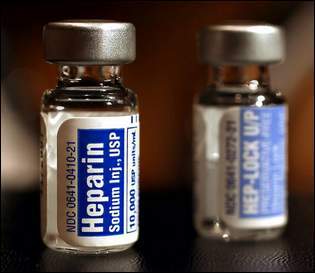Diabetes: Statistically Speaking – Part 3: In part one and two of this report we presented statistics that provided the harsh realities of diabetes, but we also discussed some of the ways to manage your health in the midst of a pre-diabetic scenario.
We finish this report with more information derived from the National Institute of Diabetes and Digestive and Kidney Diseases. This final article is designed to empower readers who are diabetic with very specific ways to reduce the complications they may face. In doing so they will add more health to their years and gain a sense of enjoyment in a disease controlled environment. If you’re willing to fight back – read on.
Glucose Control
- Studies in the United States and abroad have found that improved glycemic control benefits people with either type 1 or type 2 diabetes. In general, every percentage point drop in A1C blood test results—for example, from 8.0 to 7.0 percent—can reduce the risk of microvascular complications—eye, kidney, and nerve diseases—by 40 percent.
In patients with type 1 diabetes, intensive insulin therapy has long-term beneficial effects on the risk of cardiovascular disease.
Blood Pressure Control
- Blood pressure control reduces the risk of cardiovascular disease—heart disease or stroke—among persons with diabetes by 33 to 50 percent, and the risk of microvascular complications—eye, kidney, and nerve diseases—by approximately 33 percent.
- In general, for every 10 mm Hg reduction in systolic blood pressure, the risk for any complication related to diabetes is reduced by 12 percent.
Control of Blood Lipids
- Improved control of LDL cholesterol can reduce cardiovascular complications by 20 to 50 percent.
Preventive Care Practices for Eyes, Feet, and Kidneys
- Detecting and treating diabetic eye disease with laser therapy can reduce the development of severe vision loss by an estimated 50 to 60 percent.
- Comprehensive foot care programs can reduce amputation rates by 45 to 85 percent.
- Detecting and treating early diabetic kidney disease by lowering blood pressure can reduce the decline in kidney function by 30 to 70 percent.
- Treatment with angiotensin-converting enzyme (ACE) inhibitors and angiotensin receptor blockers (ARBs) are more effective in reducing the decline in kidney function than other blood pressure lowering drugs.
- In addition to lowering blood pressure, ARBs reduce proteinuria, a risk factor for developing kidney disease, by 35 percent—similar to the reduction achieved by ACE inhibitors.
For newly diagnosed diabetics the sheer volume of information can be so overwhelming as to create a period of inaction. This can happen for a variety of reasons. The individual may be suffering depression or they may fear that any move could result in greater problems so they simply stay in the same pattern that caused the problem in the first place.
Diabetes is a war fought on numerous fronts. Things that may have been taken for granted in the past are suddenly subject to review and are either cherished more or discarded as counterproductive.
Those diabetics who take a personal role in the fight are the ones who tend to feel the most hope for the future and often experience fewer physical problems. This is true because they seek out information that allows them to make microchoices that lead to improved health in small doses. Those small deposits in the health bank account can result in greater joy and physical longevity.
So, while we’ve dealt with some intense issues we wanted to leave you with the hope we know can help you succeed in your diabetes management goals.
This really is a fight worth engaging.
 The Glycemic Index – What is it: Medicinenet.com describes the Glycemic Index as, “An indicator of the ability of different types of foods that contain carbohydrate to raise the blood glucose levels within 2 hours. Foods containing carbohydrates that break down most quickly during digestion have the highest glycemic index.”
The Glycemic Index – What is it: Medicinenet.com describes the Glycemic Index as, “An indicator of the ability of different types of foods that contain carbohydrate to raise the blood glucose levels within 2 hours. Foods containing carbohydrates that break down most quickly during digestion have the highest glycemic index.” Diabetes And Your Skin: It is estimated that at least one third of diabetics will suffer from a skin disorder following a diabetic diagnosis. Some suggest skin problems may be the first indicator to a primary physician that there may be an issue greater than a dermatological disorder.
Diabetes And Your Skin: It is estimated that at least one third of diabetics will suffer from a skin disorder following a diabetic diagnosis. Some suggest skin problems may be the first indicator to a primary physician that there may be an issue greater than a dermatological disorder.
 The Vietnam War and Diabetes: the U.S. Department of Veteran Affairs (VA) confirmed a link between military service in Vietnam and a higher instance of Type 2 diabetes also known onset diabetes or diabetes mellitus.
The Vietnam War and Diabetes: the U.S. Department of Veteran Affairs (VA) confirmed a link between military service in Vietnam and a higher instance of Type 2 diabetes also known onset diabetes or diabetes mellitus. ADA Legislative Recommendations for the 111th Congress: The 111th Congress is taking place as of this writing. With a new President and many new congressmen and senators in office there will be a concerted push by the American Diabetes Association (ADA) to convince lawmakers to place a high priority on diabetes.
ADA Legislative Recommendations for the 111th Congress: The 111th Congress is taking place as of this writing. With a new President and many new congressmen and senators in office there will be a concerted push by the American Diabetes Association (ADA) to convince lawmakers to place a high priority on diabetes. Diabetes And The Liver: The American Diabetes Association (ADA) indicates the greatest incidence of liver disease is found among those who also have diabetes. More than 12% of those who have diabetes will die from
Diabetes And The Liver: The American Diabetes Association (ADA) indicates the greatest incidence of liver disease is found among those who also have diabetes. More than 12% of those who have diabetes will die from